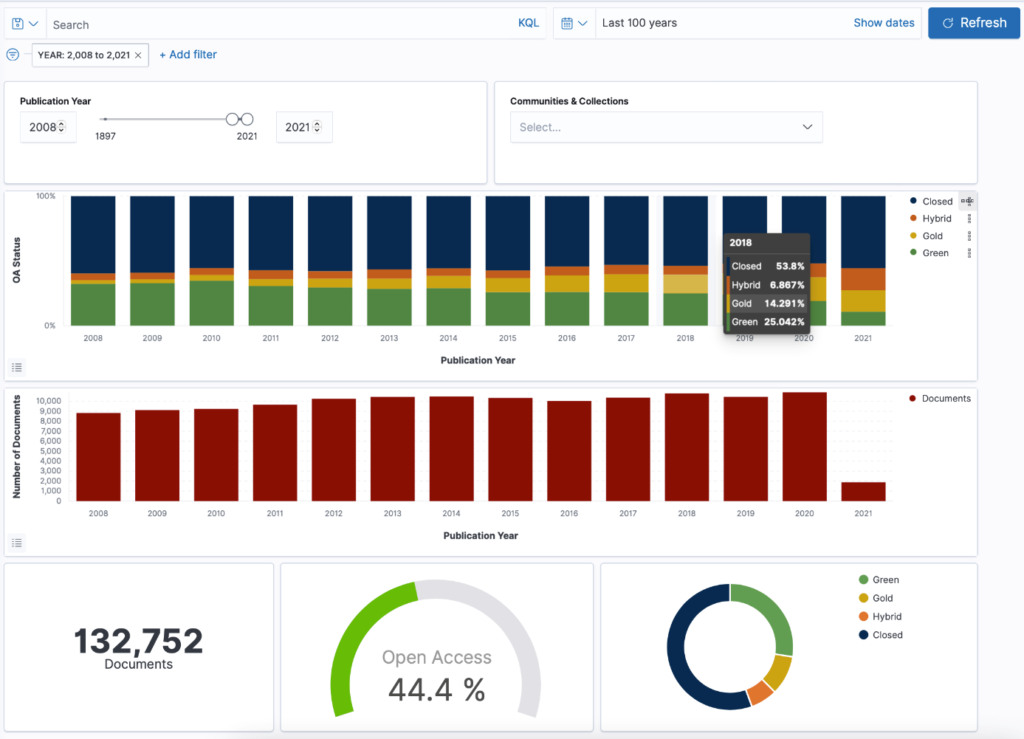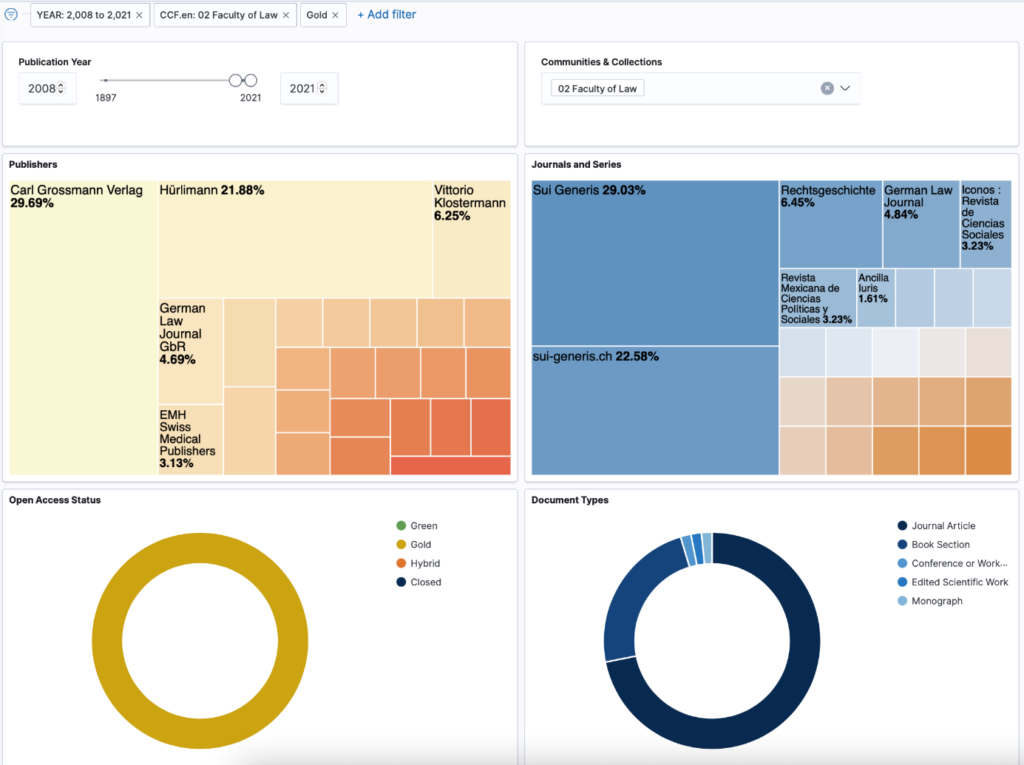This post is also available in:
 Deutsch
Deutsch
Open Access indicates that a publication is accessible on the internet without technical and legal obstacles. In 2016, Swissuniversities – the governing body of the Swiss Higher Education Institutions – developed a national strategy for Open Access in cooperation with the Swiss National Science Foundation. The aim is for 100% of publicly funded scientific publications to be available in Open Access by 2024 at the latest.
The monitoring of Open Access takes place at very different levels. On one hand, a distinction can be made between the monitoring of publication output, i.e. the publication performance, and the costs incurred. On the other hand, monitoring takes place simultaneously at supranational, national and institutional levels.
Compared to the monitoring of publication output, there are many hurdles in monitoring costs. Costs are often handled decentrally by individual institutes. In some cases, costs are also split between different institutions, which makes monitoring even more difficult. The international initiative OpenAPC collects data sets on the paid OA costs of individual institutions in order to increase transparency in cost monitoring and makes them available via Github: https://github.com/OpenAPC/openapc-de
There are various approaches for monitoring publication output, the precision of which depends on the respective data sources. At the University of Zurich, for example, the institutional repository ZORA (Zurich Open Repository and Archive) serves as the basis for the Academic Report. Accordingly, it can be assumed that the vast majority of publications are recorded in ZORA.
Open Access Monitor @ UZH
In June, UZH’s own Open Access Monitor will go live at www.oamonitor.uzh.ch. The monitor is based on the powerful search engine Elasticsearch, and the visual implementation is done using Kibana. Thematic dashboards enable complex evaluations from the perspective of the institutes and clinics as well as the researchers at UZH.
The screenshot of a dashboard below shows that filters can be used to display, for example, the OA share of a particular institute in the publication year 2020. Using Kibana Query Language, complex search queries can also be carried out via a search slot.

The following screenshot shows another dashboard. This dashboard makes it possible to find out with which publishers and in which journals UZH authors Gold Open Access have published most frequently at the Faculty of Law of the University of Zurich in the past.

The go-live of www.oamonitor.uzh.ch will be communicated through various channels.
Tools for monitoring Open Access
The renowned university ranking “CWTS Leiden Ranking” of Leiden University, which compares almost one thousand universities annually, has taken Open Access into account as indicator type in 2019. The Leiden Ranking is based on the Web of Science database.
The University of Zurich is not only listed in the Leiden Ranking but also in the Open Access Monitor Germany, which is operated by the Research Centre Jülich. Sources include Web of Science and Dimensions.
Since both the Leiden Ranking and the Open Access Monitor Germany only take journal articles into account, the OA share is of course higher compared to ZORA publications. In contrast to databases such as Web of Science etc., ZORA takes into account a number of different publication types. In addition, ZORA covers all disciplines at the UZH. This includes subjects that are hardly represented in commercial databases due to their publication tradition and which also have a very low OA share. This shows that, at least at the institutional level, the OA share is strongly dependent on the underlying data sources.
Authors can check their OA share at http://www.snsf-oa-check.ch. The prototype provided by the Swiss National Science Foundation makes it possible to search by author name. Since the Dimensions database serves as a source, publications by authors from the humanities and social sciences tend to be underrepresented.
Links and sources
CWTS Leiden Ranking: https://www.leidenranking.com
CTWS Leiden Ranking 2020: https://www.leidenranking.com/ranking/2020/list
Open Access Monitor Germany: https://open-access-monitor.de/#/open-access
SNSF Open Access Check: http://www.snsf-oa-check.ch
Swissuniversities: https://www.swissuniversities.ch/en/topics/digitalisation/open-access/national-strategy-and-implementation-plan
ZORA statistics: https://www.zora.uzh.ch/cgi/stats/report

